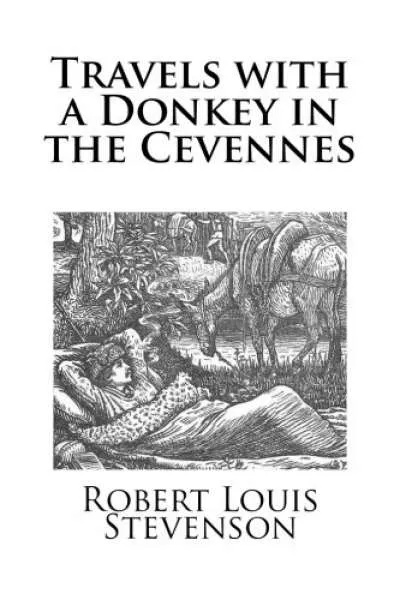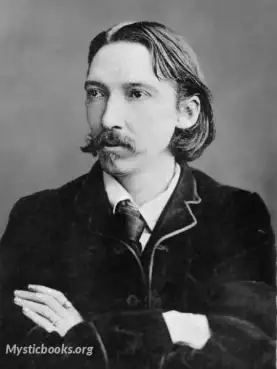
Travels with a Donkey in the Cevennes
'Travels with a Donkey in the Cevennes' Summary
Stevenson was in his late 20s and still dependent on his parents for support. His journey was designed to provide material for publication while allowing him to distance himself from a love affair with an American woman of which his friends and families did not approve and who had returned to her husband in California.
Travels recounts Stevenson's 12-day, 200-kilometre (120 mi) solo hiking journey through the sparsely populated and impoverished areas of the Cévennes mountains in south-central France in 1878. The terrain, with its barren rocky heather-filled hillsides, he often compared to parts of Scotland. The other principal character is Modestine, a stubborn, manipulative donkey he could never quite master. It is one of the earliest accounts to present hiking and camping outdoors as a recreational activity. It also tells of commissioning one of the first sleeping bags, large and heavy enough to require a donkey to carry. Stevenson is several times mistaken for a peddler, the usual occupation of someone traveling in his fashion. Some locals are horrified that he would sleep outdoors and suggest it is dangerous to do so because of wolves or robbers. Stevenson provides the reader with the philosophy behind his undertaking:
For my part, I travel not to go anywhere, but to go. I travel for travel's sake. The great affair is to move; to feel the needs and hitches of our life more clearly; to come down off this feather-bed of civilization, and find the globe granite underfoot and strewn with cutting flints. Alas, as we get up in life, and are more preoccupied with our affairs, even a holiday is a thing that must be worked for. To hold a pack upon a pack-saddle against a gale out of the freezing north is no high industry, but it is one that serves to occupy and compose the mind. And when the present is so exacting who can annoy himself about the future?
The Cévennes was the site of a Protestant rebellion around 1702, severely suppressed by Catholic Louis XIV. The Protestant insurgents were known as the Camisards. Stevenson was Protestant by upbringing, and a non-believer by philosophy. Stevenson was well-versed in the history and evokes scenes from the rebellion as he passes through the area of the rebellion during the final days of his trek. He notes that the Catholics and the Protestants, at the time of his travels, live peaceably alongside one another, though each community is faithful to its own traditions and its version of the region's history. All disapprove equally of a young Catholic man who married a Protestant girl and changed his faith, agreeing that "It's a bad idea for a man to change." As for a Catholic priest who left the priesthood and married, the sentiment common to all was that it is wrong to change one's commitments.
The book appeared the following year, 1879, and is dedicated to his friend Sidney Colvin, an art historian and critic who had befriended him when he was unpublished and seeking to develop a career as a writer.
Book Details
Language
EnglishOriginal Language
EnglishPublished In
1879Authors

Robert Louis Stevenson
Scotland
Stevenson's critical essays on literature contain "few sustained analyses of style of content". In "A Penny Plain and Two-pence Coloured" (1884) he suggests that his own approach owed much to the exag...
Books by Robert Louis StevensonDownload eBooks
Listen/Download Audiobook
- Select Speed
Related books

Primer viaje en torno del globo by Antonio Pigafetta
“Primer viaje en torno del globo” es un relato de primera mano del viaje de circunnavegación del mundo, realizado entre 1519 y 1522, bajo el mando de...

A Journey to the Western Isles of Scotland by Samuel Johnson
It is a vivid description of the landscapes, customs, and people of the region, as observed through Johnson's eyes. In this book, Samuel Johnson take...

Our New Zealand Cousins by James Inglis
The book chronicles his journey through New Zealand in the late 19th century, providing a fascinating glimpse into the country's culture, history, and...

Tales Of Lonely Trails by Zane Grey
Join Zane Grey, the celebrated author of Western classics, as he takes you on an unforgettable journey through the wild and rugged landscapes of the A...

Mengelilingi Doenia Dalam 80 Hari by Jules Verne
Follow Phileas Fogg, an eccentric Englishman, on his extraordinary journey around the globe in just 80 days. Accompanied by his loyal servant Passepar...

Pictures from Italy by Charles Dickens
Pictures from Italy is a travelogue by Charles Dickens, written in 1846. The book reveals the concerns of its author as he presents, according to Kate...

National Geographic Magazine Vol. 01 No. 1 by National Geographic Society
This inaugural volume of the National Geographic Magazine from 1889 marks the Society's ambitious start in disseminating knowledge about the natural w...

Brazil and the River Plate in 1868 by William Hadfield
This book provides a narrative description of the progress of Brazil and the River Plate countries in 1868. It covers various aspects of these countri...

National Geographic Magazine Vol. 01 No. 3 by National Geographic Society
This volume of the National Geographic Magazine from 1889 features articles on the rivers and valleys of Pennsylvania, topographic models, and an inte...

National Geographic Magazine Vol. 08 - 09. September 1897 by National Geographic Society
This volume of the National Geographic Magazine, published in September 1897, presents a collection of articles exploring various aspects of scientifi...
Reviews for Travels with a Donkey in the Cevennes
No reviews posted or approved, yet...